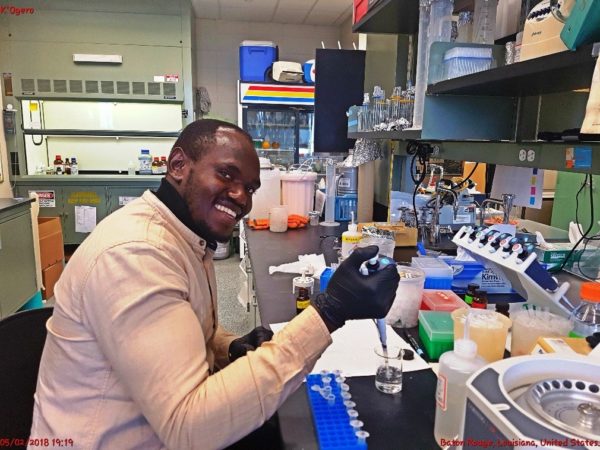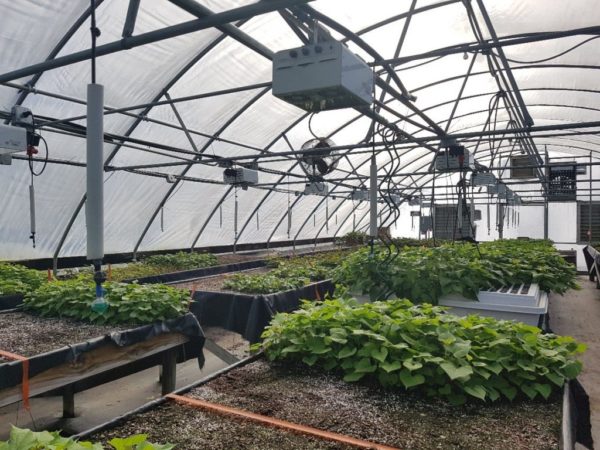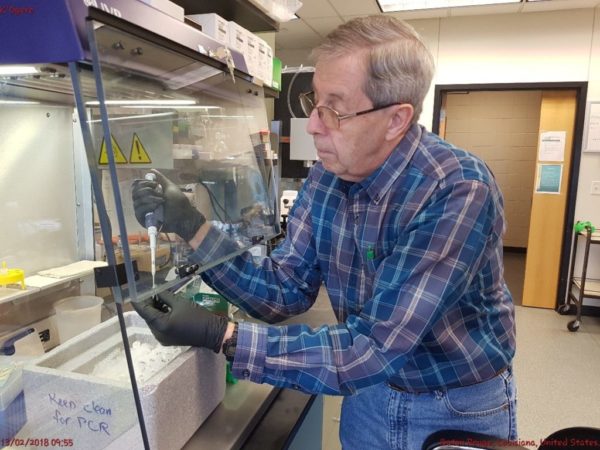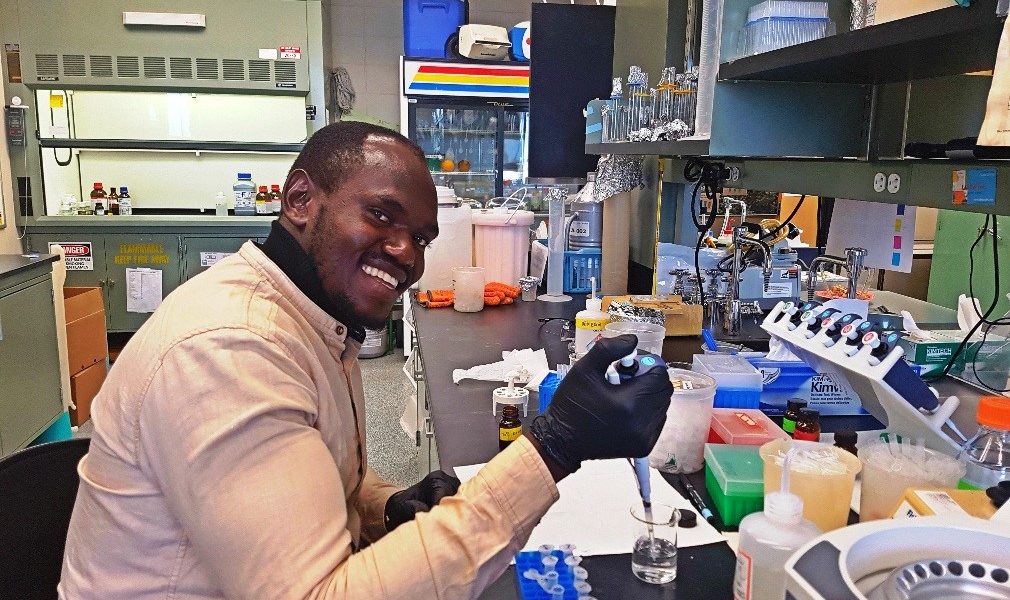Kwame Ogero of the International Potato Center takes an in-depth look at the National Clean Plant Network for Sweetpotato in the United States, drawing lessons for Tanzania, where sweetpotato is a major source of food and income.
Seed is one of the most important farm inputs. A farmer’s harvest depends a lot on the quality of seed planted. Whereas grain crops are propagated through true-to-type seed which is easily conserved, root, tuber and banana crops are propagated through bulky and highly-perishable vegetative parts. The ‘superior’ characteristics of grain crops have attracted huge private sector investments. This is not the case for RTB crops such as sweetpotato, potato, cassava and bananas. However, developed nations such as the US have invested significantly towards the improvement of vegetatively propagated crops.
Early this year, I got a chance to visit and share experiences with stakeholders involved in sweetpotato seed systems in the US. This was through a nine-week placement at Louisiana State University’s Agricultural Center (LSU AgCenter) made possible through the CGIAR-Norman Borlaug Fellowship supported by the United States Department of Agriculture Foreign Agricultural Service (USDA-FAS). My activities included studying the role of sweetpotato foundation seed programs in maintaining the integrity of commercial seed stocks by providing virus-tested (VT) foundation seed to commercial producers.
Working at LSU AgCenter under the supervision of Dr. Christopher Clark and Dr. Arthur Villordon, I learnt how virus-tested foundation seed is produced and disseminated to farmers through the elaborate and well-coordinated National Clean Plant Network for Sweetpotato (NCPN-SP).

The author, Kwame Ogero, extracting DNA from sweetpotato root samples. Department of Plant Pathology and Crop Physiology, LSU AgCenter, Baton Rouge, LA. Photo credit: C. DeRobertis.
A nation-wide network
The NCPN-SP is a member of the National Clean Plant Network (NCPN) which is a voluntary association of Clean Plant Centers, scientists, educators, regulators and industry representations who have joined forces to promote the use of pathogen-tested, healthy plant material for food crops in the US. It operates under the auspices of three federal agencies within the USDA, which work cooperatively to support research, quarantine and outreach activities for the network.
Similarly, the NCPN for Sweetpotato (NCPN-SP) is comprised of six Clean Plant Centers, scientists, educators, state and federal regulators, certified seed growers, and commercial growers from the fresh market and processing industries concerned with the health of planting material. Through the NCPN–SP, whose motto is ‘Start Clean, Stay Clean’, virus-tested foundation stock is propagated in carefully controlled greenhouses and monitored for diseases. This is then provided to certified seed growers and commercial farmers. This has tremendously boosted sweetpotato production in the US where the crop is commercially cultivated.

Virus-tested foundation seed in one of the greenhouses at LSU AgCenter’s Sweet Potato Research Station. Chase, Louisiana, USA. Photo credit: K. Ogero.
Clean Plant Centers
With funding from USDA, state governments and industry (including farmers), the NCPN-SP Clean Plant Centers produce virus-tested seed based on orders by farmers, therefore avoiding wastage and ensuring that farmers’ needs are met. Reliable estimation of demand also enables proper budgeting. The Centers have diverse strategies that enable them to meet their goals. This includes focusing upstream production on few seed multipliers, some of them certified, such as in North Carolina.
The Centers have invested differently along the seed value chain based on their goals and competencies. For instance, LSU AgCenter has invested heavily on a robust virus-testing program, while Mississippi State University has focused its resources in greenhouse bulking of virus-tested plants received from other Centers.
The Mississippi State University multiplies three varieties starting with only six tissue-culture (TC) plantlets per variety therefore not requiring a very sophisticated TC laboratory. About 90,000 – 100,000 vine cuttings are produced from the 18 TC plants. This is a stark contrast from North Carolina State University which does massive micropropagation from nuclear stocks in tissue culture. In NCSU, about 10,000 tissue culture plants of the variety Covington are produced per year. A major weakness of the NCPN-SP is lack of costing of the production process. Most of the Clean Plant Centers have not determined the cost of production per unit of seed. This implies that the price of seed is an estimate.

Dr. Christopher Clark preparing samples for virus detection at LSU AgCenter. Department of Plant Pathology and Crop Physiology, LSU AgCenter, Baton Rouge, LA. Photo credit: K. Ogero.
Lessons for Tanzania and sub-Saharan Africa
The NCPN–SP has been successful for many reasons, but importantly, farmers have a big influence in prioritization of research and extension agenda since their needs affect funds allocation from both federal and state governments. The USDA requires that priorities for research come from industry. Research and extension priorities of the NCPN–SP are reviewed annually and changing industry needs are given major consideration. Recognizing the importance of farmers’ inputs, the NCPN-SP organizes annual meetings with farmers.
This is an important lesson for Tanzania and the sub-Saharan Africa (SSA) region – to include farmers’ voices in developing agricultural research agenda. Farmer-participation in defining agricultural research is very low in Tanzania. The situation is even worse for RTB crops which are often neglected by the government. Given the importance of industry in driving growth of any sector it is necessary to proactively involve farmers, otherwise beneficial research outputs might not be adopted as required. Participatory outreach programs that encourage feedback from farmers and other industry players can contribute towards achieving this. The success of the US system also shows that governments have a major role to play in establishing reliable seed systems for RTB crops given the low interest from the private sector. Established by the Congress through the 2008 Farm Bill, the NCPN is recognized and financially supported by USA government.
Functioning seed systems are key to improving production of RTB crops in sub-Saharan Africa. The International Potato Center (CIP) is committed to building sustainable seed systems for sweetpotato in Tanzania and other SSA countries. Learning from the successes and challenges of the US, can contribute towards establishing sustainable seed systems for sweetpotato and other RTB crops in sub-Saharan Africa. Recognizing the challenges facing sweetpotato seed systems in the region, CIP established a Sweetpotato Seed Systems and Crop Management Community of Practice (SSSCoP) to encourage exchange of experiences and knowledge generation which could help identify new ways to tackle these issues. The SSSCoP brings together stakeholders interested in sweetpotato seed systems across Africa including scientists, seed producers, farmers, policy makers and the media. The next SSSCoP meeting will be held in Kigali, Rwanda from May 15 – 17, 2018.
The International Potato Center is the lead center of the CGIAR Research Program on Roots, Tubers and Bananas (RTB).
